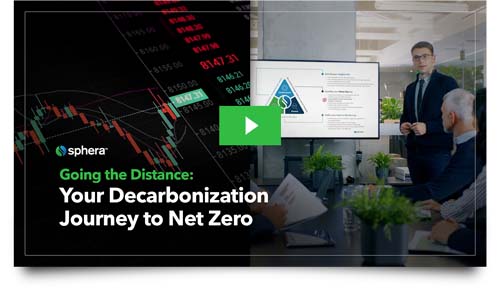What company isn’t thinking about sustainability in supply chains these days? Spoiler: There isn’t one. So if you’re not working on making sure that your company’s global supply chain is sustainable, then you’re already well behind the curve. This isn’t a new concept anymore—to keep on top of your competition, sustainability is an absolute must.
Are you ready to make your supply chain lean, green and socially responsible? Read on to gain your competitive advantage.
What Is a Sustainable Supply Chain?
A sustainable supply chain is one whose processes do not have a negative impact on coming generations. Most commonly, sustainable supply chain management is associated with environmental topics like eliminating air and noise pollution, reducing waste, saving energy and more. However, this concept shouldn’t be confused with the idea of an environmentally-friendly green supply chain, which is directly focused on the environment and is about integrating environmentally-friendly processes into the supply chain. Sustainability includes considerations of the environment but is also broader than that.
In fact, sustainability is generally considered to have three pillars:
- Economic: Economically sustainable practices are those that support long-term economic growth.
- Environmental: Sustainable practices with respect to the environment are those that won’t have a negative impact on the environment in the long run—e.g., those that don’t use excessive amounts of energy.
- Social: Socially sustainable actions are those that promote the well-being of a community and culture.
A sustainable supply chain is one that considers economic, environmental and social aspects and is comprised of processes that consider the future impact of its actions in these three different areas.
So while the environmental aspect of sustainability is important, it’s not the whole picture for your business. A truly sustainable supply chain is one that doesn’t have negative environmental, economic or social implications. A supply chain that uses modern slavery, for example, might still be considered a green supply chain—but it wouldn’t be considered a sustainable supply chain.
Five Reasons Why Supply Chain Sustainability Is Beneficial
There are very real and very concrete business benefits related to a program promoting sustainability in the supply chain. Here we break down the top five that we see.
1. It improves customer satisfaction.
Every company needs to keep its customers happy, and in today’s hyper-aware consumer culture, sustainability is a key element of that. Consider the food industry: 50 years ago, few people were aware of inhumane practices in processing animal products—and even fewer people cared. But now you can go to any grocery store and find beef boasting that it comes from grass-fed cows, and eggs that come from cage-free chickens. The food industry learned that its processes needed to be sustainable if it wanted to keep its customers happy—and other businesses are in the process of learning that very same lesson right now.
2. It helps you comply with regulations and standards.
Regulations concerning sustainability are on the rise, and it’s essential that supply chains comply with them. The Clean Water Act in the U.S., for example, regulates the release of pollutants into U.S. waters. You better believe that complying with this regulation is an advantage to your organization—or you’re likely to see some legal consequences in the future.
3. It helps you avoid reputational damage.
You know what’s even worse than a government fine because your company or one of your suppliers hasn’t complied with a specific regulation? The bad press that you’re going to get from it. Whoever said that any press is good press was definitely not thinking about getting in the news for violating sustainability expectations. Take, for example, when the Environmental Protection Agency (EPA) found that many VW cars being sold in the U.S. had a “defeat device” in diesel engines that could detect when they were undergoing emissions tests and would change their performance accordingly to improve the results. After this scandal, VW lost the trust of consumers worldwide and recalled millions of cars, resulting in the company reporting its first quarterly loss in 15 years. And it wasn’t a small loss either: $2.7 billion.
4. You can qualify for certifications that give you credibility.
It’s one thing to say that your company is exercising sustainability—it’s quite another to prove it. There are an increasing number of organizations that now offer certifications to demonstrate that companies are working with sustainability in mind. The Green Business Bureau’s (GBB) certification process, for example, awards points for each sustainable activity an organization completes, and also provides guidance around future initiatives that might help your business.
5. It makes the world better.
Don’t get us wrong—sustainable supply chains do have all the business benefits we just listed. But let’s not overlook the most basic reason: Sustainable initiatives make the world a better place. And every business should want to have a part to play in something like that.
What Is the Biggest Barrier to Supply Chain Sustainability?
There probably aren’t many companies these days who would say that they don’t want a sustainable supply chain. But if it were as easy as wanting a sustainable supply chain, then we wouldn’t even be having this conversation. The fact is, as good as a company’s intentions might be, there are a lot of barriers to actually enacting a sustainable supply chain.
The biggest, though, is almost certainly one that starts with procurement and logistics: that is, a lack of visibility into the sub-tiers of supply chains. Very few companies, especially ones with global operations or multiple business units, can fully map out their entire supply base—not just their direct suppliers, but their direct suppliers, their sub-suppliers, their sub-sub-suppliers…well, you get the point. A supply chain isn’t a chain at all — it’s a network. And it’s an expansive network that is difficult to map. But if you don’t have a full grasp of all the elements of that network, then how are you supposed to make sure they’re sustainable?
That’s why our #1 recommendation for overcoming sustainable supply chain issues is to gain global visibility into your sub-tier suppliers with a supply chain risk management program. Once you have that, you can monitor them to make sure they’re implementing the sustainable practices that your company requires—and work with them to improve those practices if they’re not meeting your standards.
riskmethods was acquired by Sphera in October 2022. This content originally appeared on the riskmethods website and was slightly modified for sphera.com.
Learn More about Sphera’s Supply Chain Risk Management Solution.










